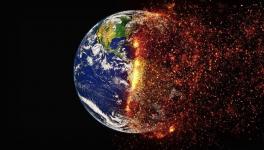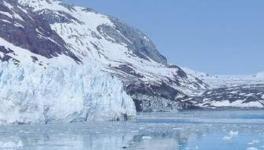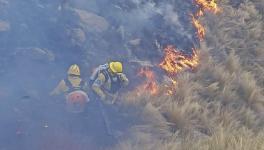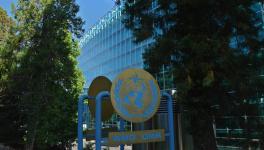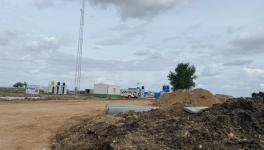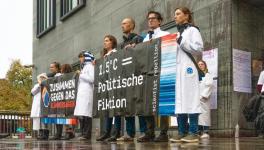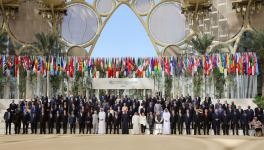2020: The Year in Science

File Photo
The year 2020 has been an extraordinary one for science. The world is still fighting a pandemic which has caused widespreadpanic. At the same time, science reacted to the crisis in an unprecedented manner. COVID-19 vaccines are being administered within a year of its outbreak, which is remarkable. Never before had a vaccines been developed in such a short period of time. However, the COVID-19 response is not the only major development from the year gone by.
-
COVID-19 VACCINE:
The development of vaccines against the novel coronavirus is the topmost scientific development in the year. Earlier, the quickest vaccine was developed against mumps and that too took four years for wide-scale use.
We have at least four candidates that have shown promising results in clinical trials—the one from Pfizer and BioNTech, another from Moderna Inc, from Oxford-AstraZeneca and Sputnik V from Russia. The Pfizer vaccine has been authorised in a few countries and some people have already been vaccinated.
Aside from these vaccines there has also been an unprecedented global effort of developing vaccines in many countries. According to the latest WHO vaccine landscape there are 60 candidates that are under clinical trial and 172 others in a pre-clinical stage.
-
SPACE TRAVEL:
The year has been remarkable for astronomy, with many important and crucial space travel missions yielding results. China’s Chang’e 5 moon mission has collected stones and dust from the surface of the moon and returned in 23 days, a first of its kind mission in the last four decades. The mission involved robotic drilling into the lunar surface to procure the sample, an operation not seen in a previous instance.
China has developed sophisticated space missions that go beyond lunar sample collection. The Chinese Academy of Sciences (CAS) has launched another sophisticated endeavour into space – the GECAM (Gravitational Wave High-energy Electromagnetic Counterpart All-Sky Monitor) from the Xichang Satellite Launch Center in Sichuan province on December 10. The mission has the capability of monitoring the sky and is aimed at tracing the origin of gravitational waves in space.
NASA’s InSight mission to Mars aims to probe the interior of the planet and so far has recorded 480 marsquakes (seismic waves in mars). The data from these marsquakes is expected to provide clues to the scientists about the interior of Mars.
Another important space mission is the near-Earth asteroid mission. The OSIRIS-REx spacecraft by NASA landed on the surface of the asteroid Bennu on October 20. The mission aims to collect samples from the asteroid surface to study the solar system. The latest NASA mission plans to compare its findings with that of Japan’s Hayabusa mission which probed the Ryugu asteroid.
-
AI PREDICTS PROTEIN STRUCTURE
A significant question in biology is: How does a protein take a three-dimensional structure based upon the amino acid sequence? More importantly, the question that has been disturbing biologists is whether one can determine the exact functional structure that a protein molecule shapes up to form from information about the amino acid sequence?
In 1969, Cyrus Levinthal had calculated that creating a protein’s structure from the amino acid sequence would take an astronomical amount time. Whereas in natural conditions a protein folds to its three-dimensional structure within a fraction of time. Since then, biologists have been striving to develop a way to determine the protein structure using various tools, as sophisticated as X-ray crystallography and the NMR (Nuclear Magnetic Resonance).
Deepmind a UK-based company has declared that it has accurately predicted the protein structure with a greater accuracy than already available computer tools. DeepMind used an algorithm called AlphaFold to achieve its target and has been the most accurate so far.
-
CRISPR/Cas9 TECHNOLOGY IN MEDICINE
This year saw the Nobel Prize in Chemistry being awarded to Emmanuelle Charpentier and Jennifer A. Doudna for the discovery of CRISPR/Cas9 technology in gene editing. The prize was also important two women scientists bagged the Nobel in Chemistry for the first time.
With these genetic scissors, researchers can now cut fragments of DNA of animals, plants and microorganisms with very high precision. This technology has had a revolutionary impact on the life sciences, is contributing to new cancer therapies and may make the dream of curing inherited diseases come true—the Nobel Society’s press release said.
-
THE FIRST ROOM TEMPERATURE SUPERCONDUCTOR
Scientists were finally able to make a superconductor work at room temperature, a remarkable feat since this phenomenon was thought to exist at extremely low temperatures. Superconductors have a wide range of applications, starting from MRI machines to mobile phone towers. Before the development superconducting material was recorded to function at a temperature of -140 degrees Celsius.
However, there remains a serious catch. The room temperature superconductor – a carbonaceous Sulphur hydride – could work when an extremely high pressure of about 267 gigapascals (more than 2m times the pressure of Earth’s atmosphere) is applied.
-
BEEF WAS A PREFERRED FOOD DURING THE INDUS VALLEY CIVILIZATION
The people of the Indus Valley were fond of eating meat and it formed a large part of their diet. More so, the Valley’s inhabitants preferred to consume beef over other meats. These findings were reported in a study titled ‘Lipid residues in pottery from the Indus Civilisation in northwest India’, published in the Journal of Archaeological Science on December 9.
The researchers studied lipid (component of cells) residue in ceramic vessels used during the Indus Valley Civilisation, specifically during the time span known as the mature Harappan period (2600/2500 BC to 1900 BC). The study aimed to delve deeper into the food habits of the Harappans by analysing the lipid residue.
The study was focused on five villages in India that were once part of the civilisation—Alamgirpur (UP), Masudpur (Haryana), Lohari Ragho (Hisar), Khanak (Bhiwani, Haryana), Rakhigarhi (Haryana) and Farmana (Rohtak, Haryana). The research team recovered 172 pottery fragments from these sites and a lipid residue analysis was done on them.
-
GREENLAND'S ICE SHEET MELTS TO POINT OF NO RETURN
The wrath of man-made climate change is already showing with ice-sheets melting alongside a concomitant sea-level rise. It was reported that Greenland’s ice sheets have melted to the point of no return.
Scientists said that so much of ice has melted that even if global warming ceases today, the ice would continue to shrink. The snowfall that replenishes the ice sheets every year will be unable to do so from here on in.
Get the latest reports & analysis with people's perspective on Protests, movements & deep analytical videos, discussions of the current affairs in your Telegram app. Subscribe to NewsClick's Telegram channel & get Real-Time updates on stories, as they get published on our website.









